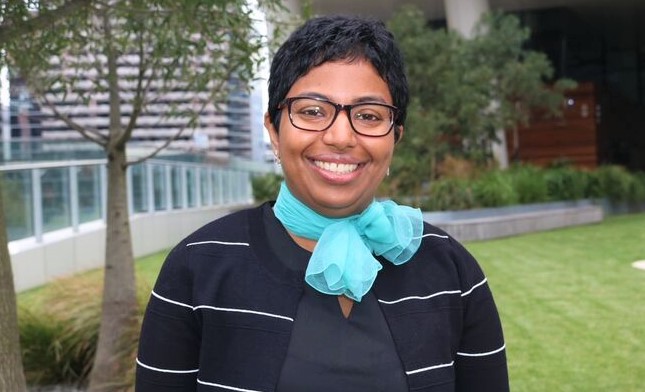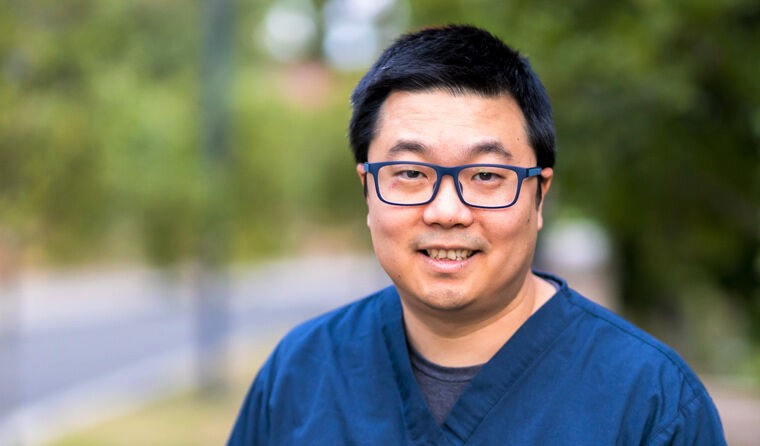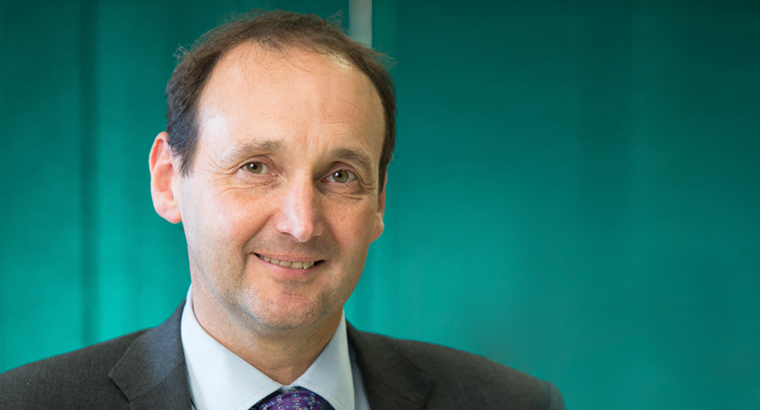News
How to tackle the ‘toxic’ financial costs of cancer
A cancer survivor, a GP and a researcher share their views on how to mitigate and prepare for the financial pain the disease can cause.
 The unseen financial impact of cancer treatment comes as a shock to many.
The unseen financial impact of cancer treatment comes as a shock to many.
Almost 150,000 Australians are diagnosed with cancer each year. While the medical impact of the disease is well documented, the financial pain is perhaps less well understood.
Three different people, each with their own unique personal perspective on the issue, spoke to newsGP about how to address the hidden ‘toxic’ costs of cancer treatment.
The cancer survivor’s view
Naveena Nekkalapudi vividly recalls the moment she heard the news. It was Christmas Eve in 2014 when her GP called.
Breast cancer was likely, she was told. Urgent treatment was required.
‘It was a bolt out the blue,’ Ms Nekkalapudi told newsGP. ‘I had no family history, no obvious risk factors. And it was an aggressive form.’
After a check on her health insurance status, a referral to a surgeon for private treatment followed. There, a long sequence of surgery, chemotherapy and radiotherapy for Grade 3 cancer began.
Almost immediately, the issue of unseen expenses started to emerge.
After a $500 consultation and biopsy, a further $600 of out-of-pocket surgery cost was quoted. Ms Nekkalapudi – who was a senior executive with a medical insurance company at the time – was unclear what the options were.
‘I didn’t know if $600 was a good, bad or ugly amount,’ she said. ‘And for me to shop around using the private health system, it’s a fallacy.
‘To go and get another quote, it would possibly cost me another $500. Maybe more, maybe less, I don’t know, because nobody publishes their price list.’
Ms Nekkalapudi pressed on with treatment but those rapidly made early decisions set the course – and she felt unprepared for what lay ahead.
‘Once you’re in the private system, it’s very difficult to feel like you can step out of the system,’ she said. ‘All the relationships that you build with the clinicians or the breast care nurses are in the private system, and they just refer you on to other private specialists.’
While the treatment was effective, there were complications. Chronic pain syndrome followed the chemotherapy and increasingly hampered her ability to maintain her demanding job.
There were also many less obvious expenses that surprised Ms Nekkalapudi, which she wishes she had understood earlier – things like physiotherapy, occupational therapy and counselling costs.
A little over a year from the initial diagnosis, she found herself around $15,000 out of pocket.
‘Since then, I haven’t kept track,’ she said. ‘But you can add on another $1000, probably a couple of thousand dollars each year for follow-up care, although I am not having active treatment.
‘For those who are continuing to have active treatment, just keep adding on the dollars.’

Naveena Nekkalapudi said the issue of unseen expenses started to emerge almost immediately after treatment began.
Ms Nekkalapudi counts herself lucky. She never returned to work full time but was helped through by an income protection policy. Even with that, however, her financial position will never quite be the same.
She hopes her story can raise awareness among health practitioners about the challenges cancer patients face in navigating a confusing system at a highly stressful time.
And while Ms Nekkalapudi acknowledges that non-cancer specialists cannot be expected to keep on top of all the developments and costs, she believes that more detailed advice on potential expenses would be most useful as early as possible in the process.
She also says there could be better awareness of inexpensive public treatment, including for physiotherapy and counselling – and wants to challenge the assumption that private care is automatically better.
‘There’s all these other subsidies and things that are available to patients, which [are] often not talked about,’ she said.
‘A lot of people think private treatment equals five-star while public equals ending up on a waiting list – that’s not the case. If it’s an urgent need like cancer, you will get seen.
‘Often the public system actually has better support around breast care nurses and all those ancillary services than the private system.’
Keen to encourage continuity of care and ongoing contact between patients and their GPs after the initial diagnosis through to treatment and follow-up care, Ms Nekkalapudi recalls feeling lost after her last radiotherapy session.
‘You walk out the door, it’s like your last day of school, you’re going “I don’t know what I’m going to do next. What am I supposed to do?”,’ she said.
‘We’re just kind of waving around in the wind a little bit.’
Now cancer free for five years, Ms Nekkalapudi finds her life is still shaped by the news that arrived that Christmas Eve. After re-evaluating her career, she now works as a consumer advocate and peer support for those diagnosed with a similar breast cancer.
Driven by a strong sense of justice, she works to help others negotiate the same system she struggled with.
‘The more passive, and the less knowledgeable you are, the more you’re likely to get a substandard level of care,’ Ms Nekkalapudi said. ‘And it’s not fair.’
The former medical insurance professional also feels well placed to talk about the hidden financial and psychological costs of cancer now that it is a disease she knows only too well.
‘Anybody who’s going through this will lose money,’ she said. ‘And you always have the ghost of cancer travelling with you no matter what time of day or where you go and how you are.
‘Because you’re just one scan away from your life turning upside down again.’
The GP’s view
‘A huge issue.’
That is how Associate Professor Joel Rhee defines the impact of financial toxicity on the treatment of cancer patients.
The Chair of RACGP Specific Interests Cancer and Palliative Care, he has heard some sobering tales of just how large a burden a cancer diagnosis can prove to be on household budgets.
‘[People] have to tap into their life savings,’ he told newsGP. ‘We hear of people who are trying to access their superannuation under the compassionate use scheme or setting up pages to crowdfund their way into getting treatments.’
He says that in a dynamic field such as cancer treatment, it can be an issue keeping on top of all the potential ways of tackling the diseases – and their costs.
‘New developments, treatments and procedures are coming out all the time,’ he said.
‘It takes time for those to become widespread and to be funded publicly. At any given time, there are going to be a number of procedures which are brand new, quite expensive and done in low volumes.
‘Even if the treatment offers a slightly better chance of success, many patients want to go for that option, even if it ends up costing a lot of money.’
In many instances, Associate Professor Rhee says treatments are not covered by Medicare or private insurance – or the gap between what is covered and what patients have to pay is very large.
‘As a result, it puts a lot of pressure onto the patients and the family and their loved ones,’ he said.
‘Sometimes these treatments might be helpful. Other times they may not be and that causes a huge problem.’

Associate Professor Joel Rhee defines the impact of financial toxicity on the treatment of cancer patients as ‘a huge issue’.
Like Ms Nekkalapudi, Associate Professor Rhee advocates for as much open communication about the potential impact as possible.
‘We should definitely talk to patients about financial implications,’ he said.
‘If we have a good knowledge and understanding of the different options, and how much they might cost, we could advise patients appropriately.’
Probing patients’ experiences and staying connected beyond the point of referral is an approach Dr Rhee encourages.
‘Most GPs would have certain specialists that they refer patients to. Any feedback from those patients is critical,’ he said.
‘You can’t exactly call up every specialist and ask pointed questions about how much they charge or whether they’ve got gaps, so the best source of information is asking your patients about what the fees were and how much information they were given.
‘And based on that feedback, you can then decide if you need to refer to someone else because they’re more transparent, more economical or give more options.
‘Staying involved is really important.’
Associate Professor Rhee recently co-authored an article looking at the cost burden a cancer diagnosis can cause. The research, ‘Exploring the role of general practitioners in addressing financial toxicity in cancer patients’, was published in July 2021.
The primary care cancer researcher’s view
Professor Jon Emery is the Program Leader for the Cancer in Primary Care Research Group at the University of Melbourne and believes the issue of toxic costs is particularly acute for those who suspect they have cancer.
‘There are data that show that cancer patients are at greater risk of these issues of out-of-pocket costs than for patients with other conditions,’ he told newsGP.
‘It’s a more significant issue than, for example, the out-of-pocket costs for somebody going for a hip replacement, because of the ongoing nature and complexity of treatment of people with cancer.’
He says it can often start with patients being referred into the private system due to concerns about the speed of diagnosis.
‘The route to diagnosis is sometimes what drives patients being referred down the private model,’ Professor Emery said. ‘For some diagnostic tests, for example, like colonoscopy, there’s a more rapid access route in the private system.’
Having said that, he says Ms Nekkalapudi’s experience – where an initial referral for private treatment can set the course – is common, and that significant out-of-pocket costs can accumulate rapidly with further diagnostic tests and different treatments.
‘The challenge for GPs is recognising once patients have gone down the private route, it’s often difficult for them to switch back into the public system,’ he said.
‘It’s important to ensure that patients are aware that they don’t have to stay in that private system if they are diagnosed with cancer.
‘Once you have a diagnosis, your planned access to treatment is very good in both the public and private sector.’

Professor Jon Emery believes the issue of toxic costs is particularly acute for those who suspect they have cancer.
However, Professor Emery is also realistic about the challenges GPs face once a patient has been referred.
‘Often those … discussions and decisions are occurring at the specialist. And it’s quite challenging for GPs to intervene at that point,’ he said.
‘These are difficult discussions to have, particularly with the focus around the hidden costs for cancer patients, because often you don’t know that diagnosis of cancer.’
Like Associate Professor Rhee, he wants to encourage an open conversation about those costs – and says the point of referral could be a key point in the process.
Even if patients have private health insurance, Professor Emery says it is often helpful if they return to their GP to discuss the findings and next steps once a referral to any cancer specialist has taken place.
‘Part of it is thinking about whether they are aware of the potential financial costs they may experience,’ he said. ‘And ensuring that they’ve had the opportunity to talk with their specialist about that.’
Log in below to join the conversation.
cancer Cancer Council Victoria chemotherapy radiotherapy referral
newsGP weekly poll
How often do patients ask you about weight-loss medications such as semaglutide or tirzepatide?